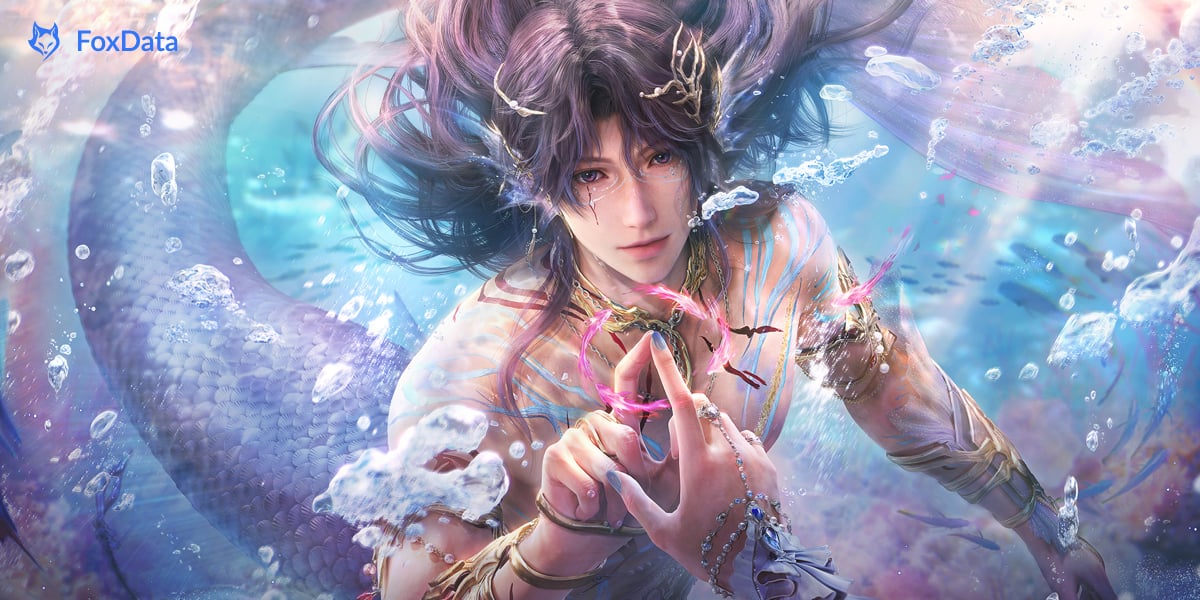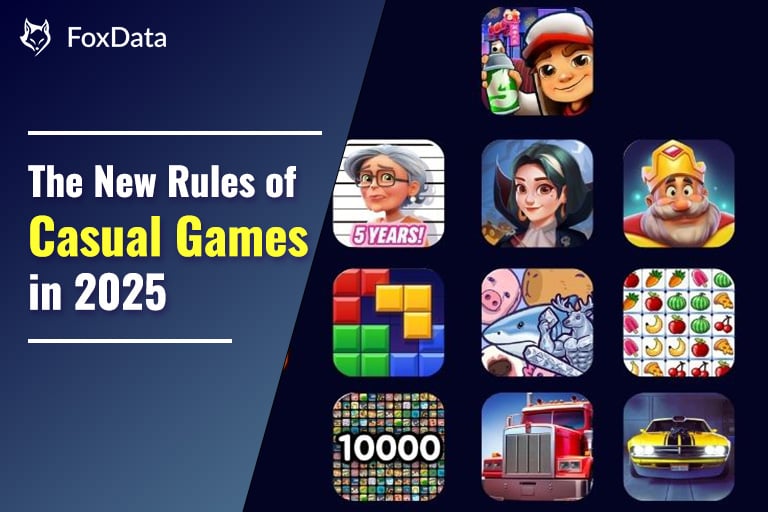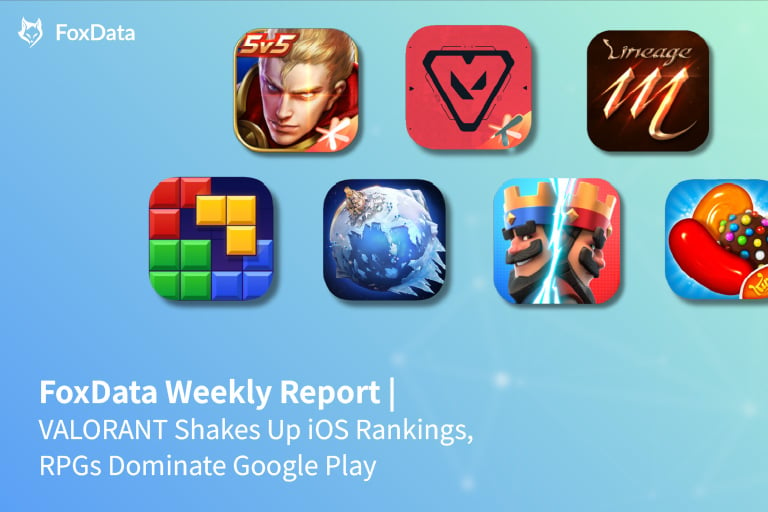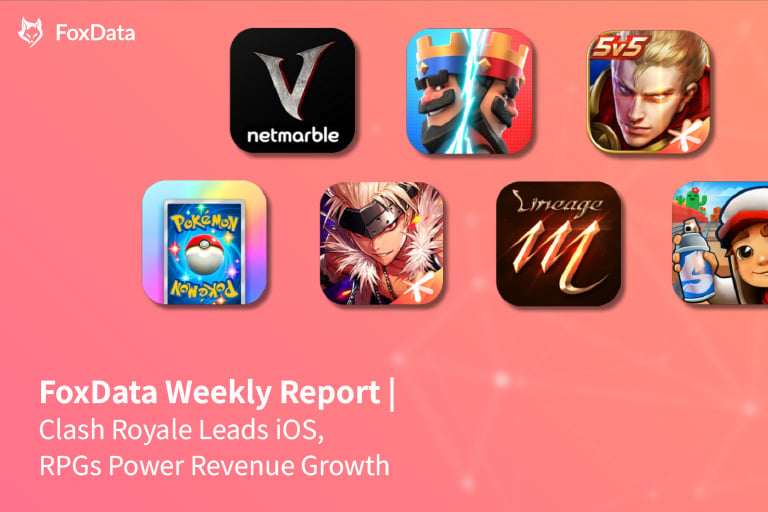Analyzing the Midgame Turning Point of Female-Oriented Games: Lessons From Love and Deepspace

With the rise of China's Generation Z female gamers, female-oriented games have transitioned from niche categories to influential content types capable of shaping industry trends.
Among the outstanding representatives is "Love and Deepspace," which has been unstoppable since it first topped the iOS best-sellers chart in late September last year. It has repeatedly reached the top of the China iOS best-sellers list, and just a few days ago (June 17), "Love and Deep Space" once again ascended to the number one spot on the China iOS best-sellers chart.
As the company behind "Love and Deepspace," Paper Game achieved a remarkable milestone in 2024, with annual revenue nearly five times higher than in 2023. The primary driver of this extraordinary growth was "Love and Deepspace," which launched in early 2024.
According to FoxData, the game generated an estimated total revenue of approximately 5 billion RMB across all Chinese platforms last year, with an additional roughly 1 billion RMB from international markets. Consequently, the total projected revenue for "Love and Deep Space" in 2024 reached approximately 6 billion RMB.
However, under the pressures of user growth plateauing, content saturation, and the maturation of business models, the future of female-oriented games requires a reevaluation of innovative strategies more than ever before.
While top-tier female-oriented games in China are generating substantial revenue, second-tier game titles are struggling to maintain their viability.
❗FoxData Hot List and Competitor Analysis Features:
FoxData offers monitoring of game rankings and competitor popularity comparisons within major markets such as the App Store and Google Play. It supports viewing:
- Trends in rankings of similar products, aiding in the assessment of release and update timings
-
Tracking user journey across key conversion nodes, such as download → retention
- Performance of promotional materials for flagship games over the past 30 days, with selection of high-engagement assets for comparative analysis
- Dissection of material iteration and combination strategies to identify the visual language behind high-volume advertising campaigns
- Segmentation of users based on acquisition channels, gender, region, device type, and interaction frequency, helping identify which persona groups respond best to specific promotions
This article will delve into the current "midfield watershed" faced by female-oriented games from the perspectives of product form, emotional construction, commercial pathways, and cultural influence.
Product evolution: from romantic fantasies to a diversified character universe expansion
Initially, female-oriented games primarily focused on "Otome" romance—interactive relationships between female players and multiple male characters, exemplified by titles like "Love and Producer" and the "Warm Warm" series, which built content ecosystems centered on emotional engagement.
However, as user maturity increased and niche segmentation deepened, the scope of "female-oriented" products has transcended the original romantic fantasy boundaries, entering a phase of product expansion emphasizing "relationship diversity" and "immersive storytelling."
The main developmental pathways include:
- Elevation of romantic narratives: shifting from emotional consumption to plot reasoning and world-building, as seen in titles like "The Traveler of Time and Space," which features multi-line, multi-ending storylines that enrich character dimensions.
- Female-led products beyond romance: such as "Light and Night," which incorporates elements of career growth, political intrigue, and personal destiny, highlighting self-actualization.
- Integration of character collection and interaction simulation: for example, "Code Kite" introduces multi-character emotional storylines to enhance user retention.
- Multi-faceted social modules: female-oriented games are beginning to develop richer community features and UGC systems, unlocking community role-playing potential.
This indicates that the era of simple "sweet romance" narratives is receding, with increased emotional complexity and multi-perspective resonance becoming the future core competencies.
The female protagonist in "Light and Night" is characterized as a designer.
Reconceptualizing Emotional Construction: From Character Strategy to Relationship Management and Value Recognition
The core competitive advantage of female-oriented games has never been merely the combination of "match-3 plus storyline" or "card collection systems," but rather the precision in "emotional orchestration" and "contextual responsiveness."
Traditional otome products primarily focus on advancing the strategy line, gradually bridging the emotional gap between the male lead and the player through task-based interactions. However, recent industry insights reveal that today's core players have developed a high immunity to conventional narrative formulas, art styles, and voice cast combinations.
In place of these, a deeper "relationship co-creation" mechanism has emerged, requiring games to enable players to possess a tangible identity within the worldview and wield emotional influence. This manifests specifically as:
- Emotional Depth: Character development is no longer about stacking two-dimensional personas but revolves around variables such as moral values, traumas, and growth trajectories, fostering authentic empathy.
- Enhancement of User Role Agency: For example, allowing players to make pivotal fate decisions as the "female lead" at branching story points or influence male characters' trajectories as the "manager" role.
- Chain Relationship Dynamics: Advanced content emphasizes not only unidirectional emotional projection from players onto characters but also highlights triangular structures, bond locking, and mutual influence within group relationships.
- Layered Projection Mechanism: Through a three-tiered process of "projection—identification—empathy," the system responds to Generation Z users' desire for "ideal self" resonance, such as embodying a CEO, a rights advocate, or an international spy.
Ultimately, female-oriented games evolve from mere "script immersion" to a sophisticated "virtual relationship management system": one that not only constructs relationships but also enables players to derive self-affirmation within these relationships, thereby enhancing emotional investment.
❗FoxData Public Opinion and Comment Optimization Module:
- Enables the construction of player preference profiles based on "keywords + comments + rating trend analysis"
- Detects the frequency of negative feedback expressions (e.g., "plot collapse," "slow updates") to assist in optimizing content pacing
👉 Particularly suitable for evaluating whether the strategic or content teams' "aesthetic decisions" align with mainstream market trends.
Future Profit Model: Transitioning from Internal Purchase-Driven Strategies to a New Ecosystem of Cross-Domain IP Content Expansion
Currently, the revenue model for female-oriented games primarily relies on card draws and story-based paid content, but its ceiling is gradually becoming apparent. Industry analysis indicates that the focus will shift from simply increasing paid features to constructing a sustainable, extensible product content ecosystem.
Key pathways include:
- Development of an Operational Narrative System: By implementing long-term open-world gameplay, revisiting storylines, and creating side stories for characters, continuously generate "emotional recharge points" to provide weekly emotional value delivery;
- Content Platformization (Content-as-a-Service): Attempt to establish a coexistence of professionally generated content (PGC) and user-generated content (UGC), such as character voice libraries and scene editing tools, to extend content playability;
- Cross-Domain IP Operations: Integrate storylines and settings across manga, radio dramas, animation, short videos, and e-commerce platforms. Companies like Tencent and Netease have already established "female-oriented content matrices";
- Data-Driven User Engagement: Leverage in-depth understanding of user behavior, emotional cycles, and consumption rhythms to develop a refined re-marketing system centered on "character fragments, content outreach, and strategic awakening."
The core assets of female-oriented products have long transcended art assets or numerical models, now encompassing vast emotional and user relationship assets. Only through systematic IP management, content integration, and relationship reuse can true structural commercial potential be unlocked.
For a successful case study in IP operation—Labubu
Challenges of Cultural Complexity: Valuation in a Romanticized Context
It is noteworthy that female-oriented works often exhibit certain cultural biases when constructing emotional tension and virtual desires.
On the player side, an increasing number of female gamers are questioning traditional male protagonist archetypes characterized by "domineering, violent aesthetics" or "grooming-style emotional development," prompting a shift in game aesthetics from "projection of ideal lovers" to "equal soulmates" or "self-growth companions." From a narrative perspective, more works are attempting to introduce non-traditional male characters—such as corporate drones, social anxiety sufferers, marginalized individuals, supernatural beings, and same-sex characters—creating more inclusive and diverse content expressions.
Furthermore, developers must remain vigilant: "female-oriented" is not a static genre label nor a crude simulation of "pink filters and gift-giving mechanics."
Authentic "female narratives" must respond to women's realities, desires, autonomy, and social imagination.
Therefore, in cross-regional exports—especially to Japanese, Korean, European, and American markets—balancing cultural differences, ethical acceptance, and character construction presents a new complex challenge that intertwines commercial interests with social values.
Targeted at women, these games transcend mere entertainment categories to become mediums of cultural trends.
The future of women-oriented gaming hinges not only on discovering new monetization models but also on establishing a multidimensional platform where emotional labor is respected, female imagination is valued, and women's contributions are recognized and celebrated.
Such games serve as both a showcase of entertainment technology and a mirror reflecting societal psychology. From "romance simulators" to "female destiny experience platforms," the evolution of women-centric games involves a complex competition among gameplay systems, content frameworks, and cultural values.
Hope the industry, beneath the surface of high revenue figures, can cultivate sufficient patience, technological innovation, understanding, and empathy to build a digital stage that genuinely accommodates diverse expressions of femininity.
📚 Recommended reading:






